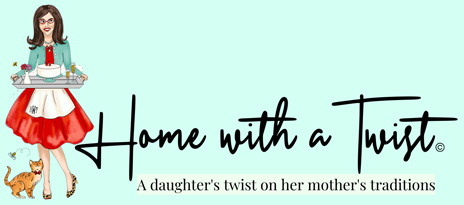
My beautiful Mother, Earnie
February is Heart Month, designated by the American Heart Association to raise awareness of women’s risk of heart disease and stroke.
One hundred years ago, in 1924, the American Heart Association was founded. From humble beginnings, the AHA has grown into the nation’s oldest and largest voluntary organization dedicated to fighting heart disease and stroke. Their mission is to be a relentless force for a world of longer, healthier lives. Until heart disease and stroke are stories of our past, not our future, their relentless pursuit will continue.
My parents and grandparents had cardiovascular disease, including stroke, high blood pressure, diabetes, and heart attack. My biggest shock came when my mother suffered a stroke in 2007. Her best friend, Margaret, called my sister and told her, “Your Mother doesn’t seem right,” and wasn’t making sense on the phone. I stopped by Mother’s house on the way to work and took one look at her and knew she was suffering from a stroke. The entire side of her face was drooping, and she had a blank look. Still able to function, we rushed her to the hospital, where she stayed for about a week. Fortunately, Mother regained her abilities, but some damage was irreversible. She lost her ability to write clearly –oh, she had beautiful penmanship and loved to send letters and cards to friends; she became easily fatigued, swallowing food was a challenge sometimes, she found it difficult to find the right words when putting a sentence together — something referred to as “word salad” and could no longer safely drive her car. It was a huge adjustment for her, but she did it with a smile and a positive attitude! Thankfully, our family made the adjustments needed, and that’s when my parents came to live with us.
 What I remember most about that day in the ER with Mother was this: As they were assessing Mother’s blood pressure, I couldn’t believe the result. The nurse and I looked at each other and then at Mother. The nurse asked her, “Do you have hypertension?” I expected Mother to reply no, but she told the nurse she indeed had been diagnosed with hypertension several years prior and was taking medication for it. I had to pick up my chin off the floor. How had I missed this? Why did she not tell me this? Come to find out, this was partly true. The nurse called her physician to confirm hypertension, then followed up with the pharmacy only to find that Mother had not filled her prescription in over a year! When the nurse reported this to the mother, she only responded that she felt fine and didn’t think the medication was necessary.
What I remember most about that day in the ER with Mother was this: As they were assessing Mother’s blood pressure, I couldn’t believe the result. The nurse and I looked at each other and then at Mother. The nurse asked her, “Do you have hypertension?” I expected Mother to reply no, but she told the nurse she indeed had been diagnosed with hypertension several years prior and was taking medication for it. I had to pick up my chin off the floor. How had I missed this? Why did she not tell me this? Come to find out, this was partly true. The nurse called her physician to confirm hypertension, then followed up with the pharmacy only to find that Mother had not filled her prescription in over a year! When the nurse reported this to the mother, she only responded that she felt fine and didn’t think the medication was necessary.
Heart disease and stroke are the world’s two leading killers, and more than one in three U.S. women live with some form of cardiovascular disease. However, studies show that 80 percent of cardiac events and strokes are preventable. Please familiarize yourself with heart attack and stroke symptoms here.
High blood pressure affects one out of three adults over 20. It is called “the silent killer” because there are usually no symptoms. What is hypertension? A lot of times, it’s considered a man’s disease, so women don’t think they can be affected. Mother never liked to take medicine, even after she came to live with me. In the beginning, when I’d hand her medication to her, I’d watch her try to put it into her tissue. I was always very respectful but would point out she needed to take it. Reluctantly, she would. Another factor that caused her non-compliance was that she devoted all her time and strength to caring about Daddy and didn’t give herself the same attention. Caring for a loved one strains even the most resilient people. An excellent resource from the Mayo Clinic provides tips for caregivers.

More women die from heart disease than from all forms of cancer. It’s not rocket science, but why do we try to complicate it? Our prescription is not complex — eat smart and exercise. Some factors are unpreventable, but we can all agree that diet and exercise are two things we do have control over.

If you love to cook and want recipe inspiration, the AHA has an extensive library of delicious and healthy recipes here. While there, please scroll to the bottom of their recipe site for fun cooking skills classes.
Love cookbooks? Why not add an American Heart Association Cookbook to your library? Visit their site for current books here.
Join the American Heart Association and make 2024 your best year yet! Sign up for their 100 Ways in 100 Days to Better Health for emails, tips, and information seven days a week for the next 100 days to help you eat better, move more, and be well. Learn more here.
If it has been a while since you have seen your physician and had lab work, do yourself a favor and give yourself this gift. As a healthcare professional, I greatly advocate for an annual physical examination from a family practice physician or internist AND an annual gynecological appointment. Of course, it can be argued that your family physician can do your GYN exam, but I feel that women’s needs are best met, especially peri and post-menopausal, by a GYN. Just my opinion, but so far, it has served me well. We only get one pass in this world, and you might as well make it the best you can. We make appointments for our loved ones — children, spouses, and parents, yet why are we always at the bottom of the “to-do” list?
 I have added a helpful resource to my library: Heart Smart for Women: Six S.T.E.P.S in Six Weeks for Heart-Healthy Living. The book is easy to understand and a terrific introduction to the changes needed to live a long and healthy life. It would be the perfect book for someone recently diagnosed with heart disease.
I have added a helpful resource to my library: Heart Smart for Women: Six S.T.E.P.S in Six Weeks for Heart-Healthy Living. The book is easy to understand and a terrific introduction to the changes needed to live a long and healthy life. It would be the perfect book for someone recently diagnosed with heart disease.
Here is a helpful link from The Heart Foundation with additional resources.
I hope this helps you. Please share this post with a friend or on Facebook. It could save their life.


 Hospitality is in my DNA. I founded Home with a Twist, a daughter’s twist on her mother’s traditions, in memory of my mother to celebrate her life and the gifts she shared with me. Mother loved to celebrate life’s occasions – big and small.
Hospitality is in my DNA. I founded Home with a Twist, a daughter’s twist on her mother’s traditions, in memory of my mother to celebrate her life and the gifts she shared with me. Mother loved to celebrate life’s occasions – big and small.

Lovely and helpful article!! I loved your mom!!
Thank you!!
Margaret’s daughter, Pegie
Oh, Pegie, Mother loved you so much. Melissa
Dear Melissa,
Your story warmed my heart. I am a TIA survivor, currently a caregiver for my husband who is battling prostate cancer. I continue to miss all you did to shepherd the members of the Quinq Club.
My grandson, Will the Wonderful, says “My Juju is 85 on the outside, but she’s 16 on the inside.” That’s a pretty accurate description.
So good to hear from you Julie! I am sorry to hear of your husband’s illness. While it is a loving and noble job, caregiving is draining. Please be kind to yourself. I love Will’s description of you. It’s perfect. I miss you as well.